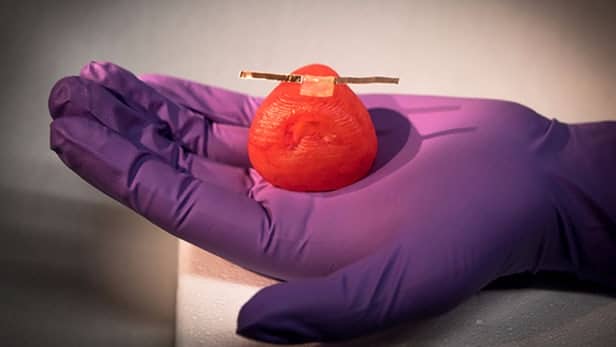A team of international researchers has made use of the advancements in the field of 3D printing as the 3D printed organs to help surgeons prepare for surgeries. We saw another team of researchers solving the problem of hearing loss with 3D printed bones. But, the new research plans to go even further than that to use the 3D printing to make individually-tailored model organs.
These 3D printed organs will allow doctors to plan a practice procedure before the patient goes under the knife. Surgical props are used for this purpose but they are not the same as humans and don’t prepare the doctors completely on what to expect. That could change with these 3D printed organs.
The team printed a number of lifelike human prostates from uniquely tailored silicone-based inks. These specially designed inks mimicked the tissue properties and the mechanics of a real prostate, based on MRI scans and organ samples from study participants.
The researchers fitted sensors into these 3D printed organs that allowed the team to collect data on how the organs behaved when they underwent tests and were poked or prodded by various surgical tools. It was discovered that the printed organs were replicating the properties of a real human organ to a high degree of accuracy.
The team now hopes to make more complex organ models using multiple inks that could allow the surgeons to practice for more tricky procedures like removing tumors. The researchers hope that these organs could one day replace human organs.
“If we could replicate the function of these tissues and organs, we might someday even be able to create ‘bionic organs’ for transplants,” comments lead researcher of the study, Michael McAlpine, an associate professor of mechanical engineering in the University of Minnesota’s College of Science and Engineering. “I call this the ‘Human X’ project. It sounds a bit like science fiction, but if these synthetic organs look, feel, and act like real tissue or organs, we don’t see why we couldn’t 3D print them on demand to replace real organs.”
You can watch the video here:

